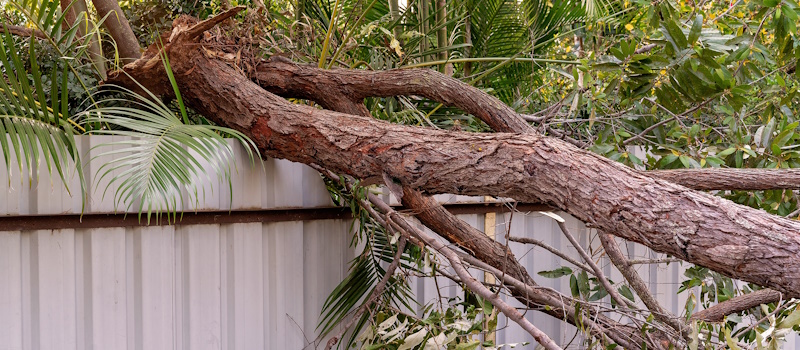Storm Recovery: Impacts of Tree Falling on My Home or Car
Storm Recovery: Impacts of Tree Falling on My Home or Car

Storm Recovery: Impacts of Tree Falling on My Home or Car
It's estimated that roughly five percent of insured homes will have a property damage claim most years. However, when trees fall, they can cause serious damage. Trees help add ambiance and character to a neighborhood or yard, but if they fall on a home or vehicle, they can be costly. In fact, the average insurance claim involving trees is over $4,000.
In this post, we'll discuss the impact of tree damage on your car or home, what type of insurance covers it, and more.
A Tree Damaged My Home or Car - Am I Covered?
In most cases, the answer is "yes" - but there may be a few exceptions.
For example, if a tree falls as the result of a storm or inclement weather and damages your home, your homeowners insurance policy will cover the damage. Coverage includes all aspects of your home - garage, shed, fence, etc. Your homeowners insurance will also cover tree removal if it's blocking a driveway or a handicap ramp. If a tree falls and causes damage to your vehicle, it's your auto insurance that covers the damage.
While tree damage caused by storms is likely to be covered by your insurance policy, there are incidents of tree damage that may not be covered. For instance, if the tree is of old age and falls due to natural causes, that's typically not covered. The same is true if a tree is decaying or rotting, falls, and causes damage. If a tree falls in your yard but doesn't cause any damage (no matter the cause), it's typically up to the property owner to coordinate removal and cleanup services.
While any tree damage from inclement weather is covered by your policy, it's always a good idea to occasionally review your policy so that you know just what is covered and how much.
What to do if a Tree Falls
If a tree falls and causes damage to your property, the first thing you should do is ensure you and other home occupants are safe. Once the storm passes, make sure to take plenty of pictures of the damage incurred as documentation for your insurance company. Take pictures from various angles to offer the best perspective of the damage possible.
After this, contact your insurance company and file a claim. A claims adjuster will likely visit your property, assess the damage, and then explain what your coverage is and what the next steps are when it comes to removal, cleanup, and repair.
How to Prevent Property Damage Caused by Trees
When Mother Nature strikes, there isn't much that can withstand the impact - trees included. And while you may not be able to fully prevent trees from falling, there are measures you can take to prevent it. For instance:
- Regularly trim trees, especially those with long branches growing near your home.
- Inspect trees to check for health. Dead, diseased, or decaying trees are much more likely to fall than healthy trees. If they can't be nursed back to life, dead or decaying trees on your property should be removed.
- Beware of trees that begin leaning and consider removing them.
